Great talk with kids at Lidia Matte school.
I was invited to Lidia Matte school, near Santiago de Chile to speak about galaxies with students. This was part of a terrific program from CONICYT to link students and scientists.
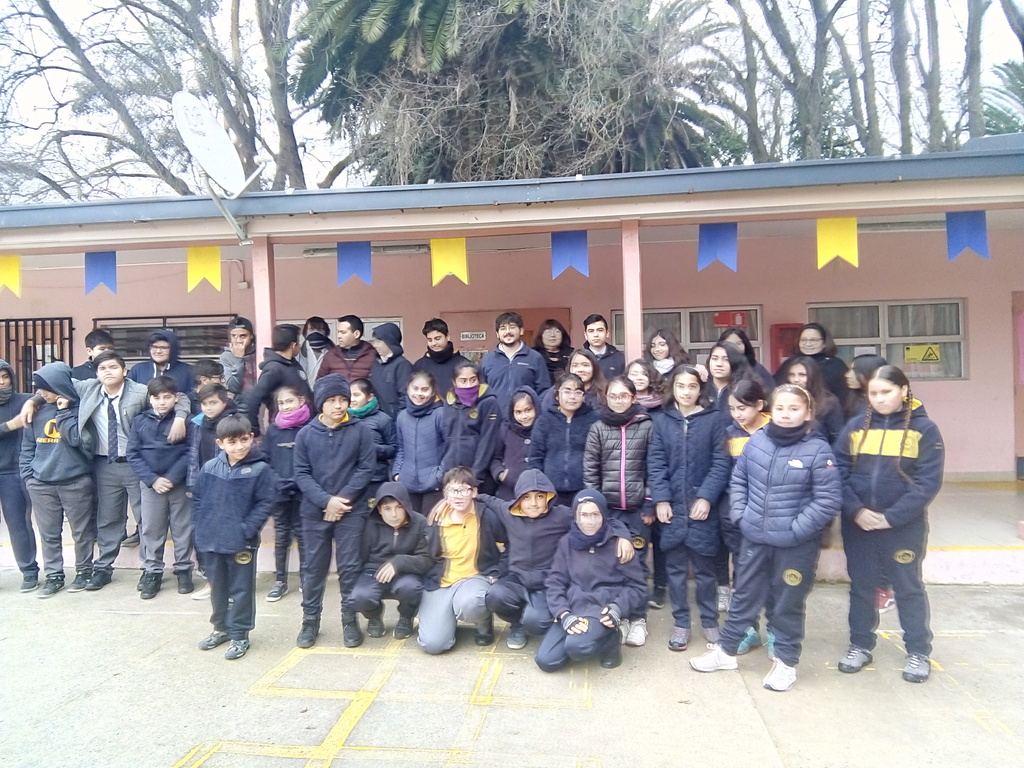
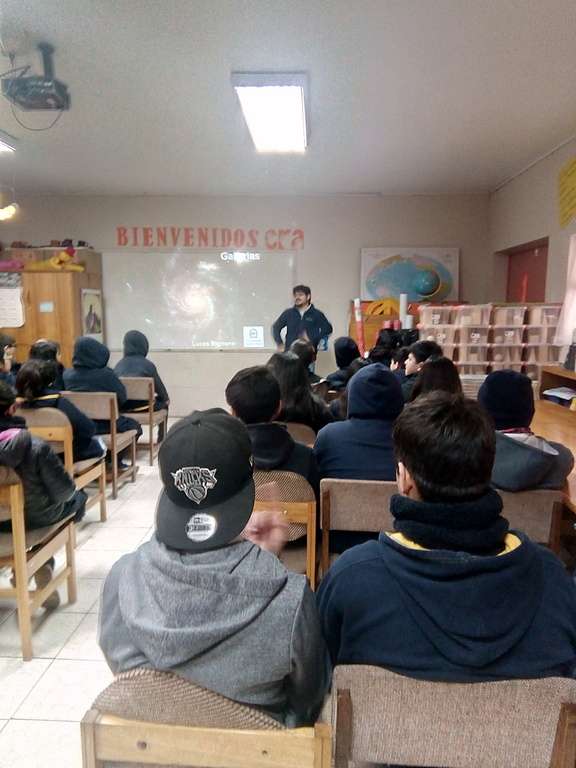
I was invited to Lidia Matte school, near Santiago de Chile to speak about galaxies with students. This was part of a terrific program from CONICYT to link students and scientists.


Context. Understanding the formation and evolution of early-type, spheroid-dominated galaxies is an open question within the context of the hierarchical clustering scenario, particularly in low-density environments. Aims: Our goal is to study the main structural, dynamical, and stellar population properties and assembly histories of field spheroid-dominated galaxies formed in a Λ-cold dark matter (Λ-CDM) scenario to assess to what extent they are consistent with observations. Methods: We selected spheroid-dominated systems from a Λ-CDM simulation that includes star formation (SF), chemical evolution, and supernova feedback. The sample is made up of 18 field systems with MStar ≲ 6 × 10\(^{10}\) M\(_\odot\) that are dominated by the spheroid component. For this sample we estimated the fundamental relations of ellipticals and compared them with current observations. Results: The simulated spheroid galaxies have sizes that are in good agreement with observations. The bulges follow a Sersic law with Sersic indexes that correlate with the bulge-to-total mass ratios. The structural-dynamical properties of the simulated galaxies are consistent with observed Faber-Jackson, fundamental plane, and Tully-Fisher relations. However, the simulated galaxies are bluer and with higher star formation rates (SFRs) than the observed isolated early-type galaxies. The archaeological mass growth histories show a slightly delayed formation and more prominent inside-out growth mode than observational inferences based on the fossil record method. Conclusions: The main structural and dynamical properties of the simulated spheroid-dominated galaxies are consistent with observations. This is remarkable since our simulation has not been calibrated to match them. However, the simulated galaxies are blue and star-forming, and with later stellar mass growth histories compared to observational inferences. This is mainly due to the persistence of extended discs in the simulations. The need for more efficient quenching mechanisms able to avoid further disc growth and SF is required in order to reproduce current observational trends.
We study the properties of long gamma-ray bursts (LGRBs) using a large-scale hydrodynamical cosmological simulation, the Illustris simulation. We determine the LGRB host populations under different thresholds for the LGRB progenitor metallicities, according to the collapsar model. We compare the simulated sample of LGRBs hosts with recent, largely unbiased, host samples: BAT6 and SHOALS. We find that at z < 1 simulated hosts follow the mass-metallicity relation and the fundamental metallicity relation simultaneously, but with a paucity of high-metallicity hosts, in accordance with observations. We also find a clear increment in the mean stellar mass of LGRB hosts and their star formation rate (SFR) with redshift up to z < 3 on account of the metallicity dependence of progenitors. We explore the possible origin of LGRBs in metal rich galaxies, and find that the intrinsic metallicity dispersion in galaxies could explain their presence. LGRB hosts present a tighter correlation between galaxy metallicity and internal metallicity dispersion compared to normal star-forming galaxies. We find that the Illustris simulations favours the existence of a metallicity threshold for LGRB progenitors in the range 0.3-0.6 Z\(_\odot\).
Students at the astronomical observatory of the Colegio Nacional de Buenos Aires observed the partial solar eclipse and made pictures and mesurements. Congratulations to their teacher, Araceli Barrera for organizing this activity. It was very fun to participate.
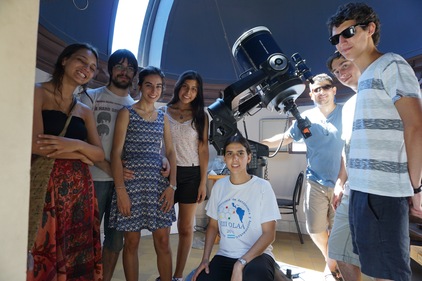
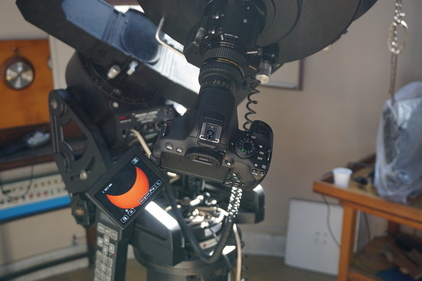
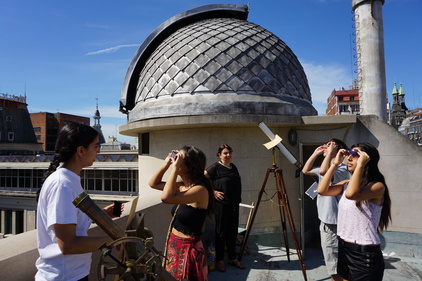
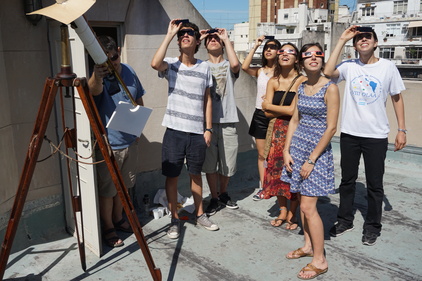


We study non-parametric morphologies of mergers events in a cosmological context, using the Illustris project. We produce mock g-band images comparable to observational surveys from the publicly available Illustris simulation idealized mock images at \(z=0\). We then measure non parametric indicators: asymmetry, Gini, M\(_{20}\), clumpiness and concentration for a set of galaxies with M\(_*\)>\(10^{10}\) M\(_\odot\). We correlate these automatic statistics with the recent merger history of galaxies and with the presence of close companions. Our main contribution is to assess in a cosmological framework, the empirically derived non-parametric demarcation line and average time-scales used to determine the merger rate observationally. We found that 98 per cent of galaxies above the demarcation line have a close companion or have experienced a recent merger event. On average, merger signatures obtained from the G−M\(_{20}\) criteria anticorrelate clearly with the elapsing time to the last merger event. We also find that the asymmetry correlates with galaxy pair separation and relative velocity, exhibiting the larger enhancements for those systems with pair separations d<50 h\(^{−1}\) kpc and relative velocities V<350 km s\(^{−1}\). We find that the G−M\(_{20}\) is most sensitive to recent mergers (∼0.14 Gyr) and to ongoing mergers with stellar mass ratios greater than 0.1. For this indicator, we compute a merger average observability time-scale of ∼0.2 Gyr, in agreement with previous results and demonstrate that the morphologically derived merger rate recovers the intrinsic total merger rate of the simulation and the merger rate as a function of stellar mass.